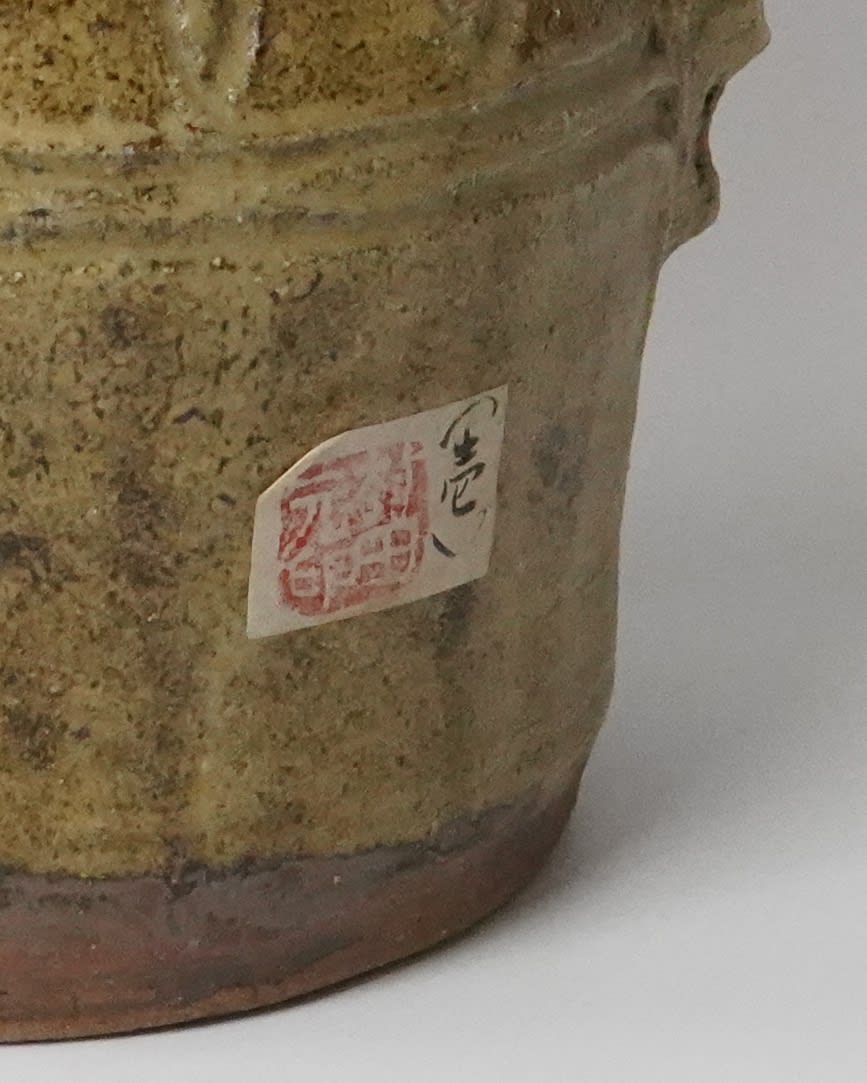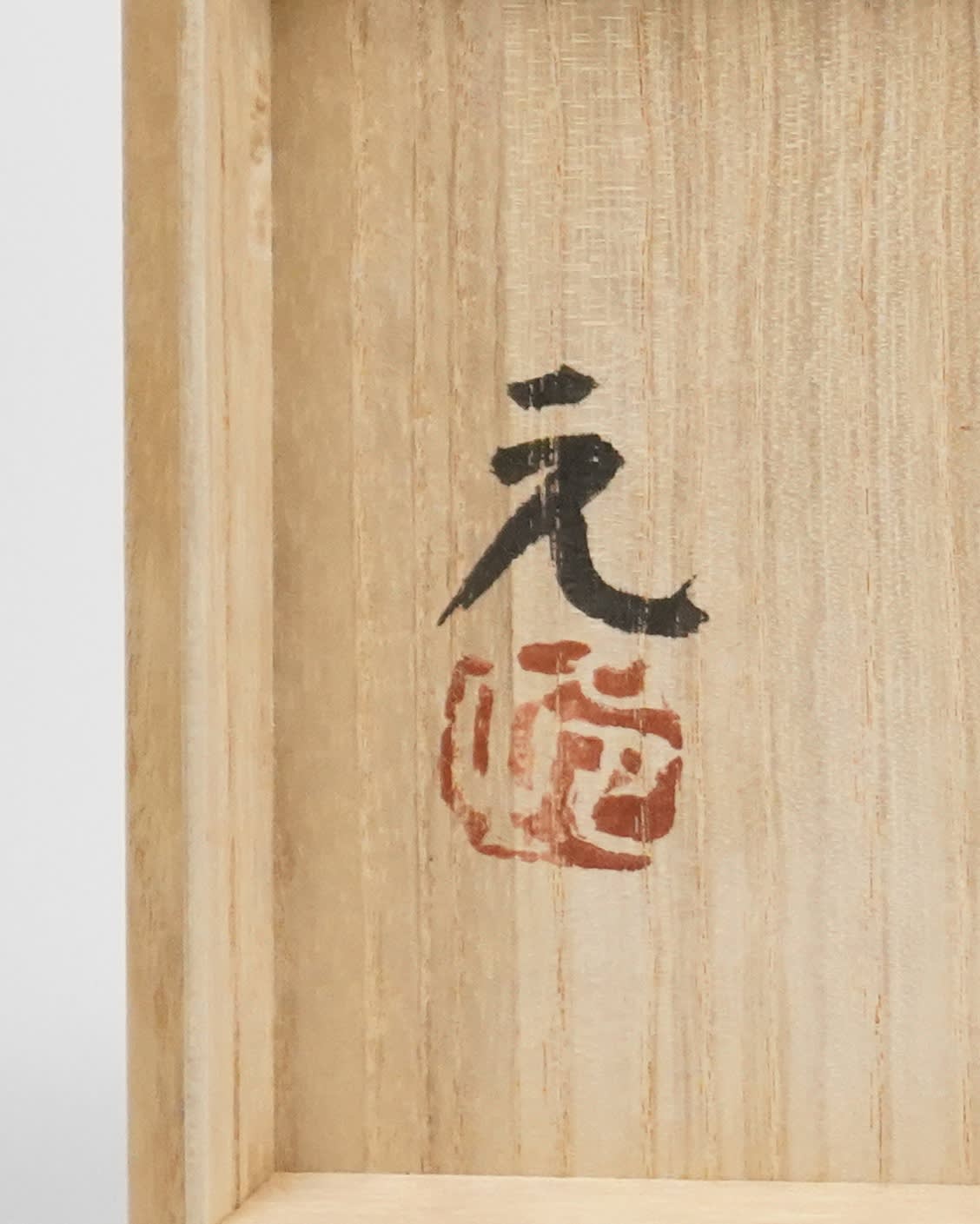Collectors and cermaic connoisseurs often have a good eye for spotting artists seals. Not only is it important to recognize an artist's signature and hand to understand an artwork's authenticity (particularly when the piece is an older work), it is also important to dissect what goes into a seal.
The Mashiko and Mingei artist Murata Gen 村田 元 (1904-1988) used three different seals during his lifetime. His works are rare and speak to his sensitivity for surfaces, through his training as a classical calligrapher and painter. To understand his seals, we may categorize them into the following three seal types stamped in red:
1: A seal bearing his full name in ancient script convention using ancient Chinese characters & stylization:

2: Seal bearing his full name in modern Kanji script:

3: Seal bearing the first Kanji character of his name “mura 村” in ancient script convention using ancient Chinese stylization:

The fourth character in the first & second type seals “印” is approximately equivalent in English to “Signed by”. Each seal reads from top right to bottom left. Therefore, seals 1 & 2 read: 村田 元 印, which roughly translates to "Signed by Murata Gen". 1 uses ancient Chinese/Kanji characters & stylization, while 2 uses contemporary script.
Though it is not uncommon for potters to bear seals in both contemporary and ancient script, it is likely that Murata's seals were a result from his training as a classical calligrapher and painter. The styles of seals are rooted in the written literary conventions of China and Japan.
As a painter, Murata would have also paid attention to the placement of seals on either the wooden boxes, or pasted onto the jars themselves. For example, in the first image showing the seal type with his full name in ancient script, he stamped one half of his seal shrouded in a darker part of the wood, while the other half occupies a lighter aspect of the box. Whether this was an intentional choice or not is up to debate. However, it provides a fascinating additional composition to a sometimes overlooked, to ceramic slow looking & connoisseurship.
